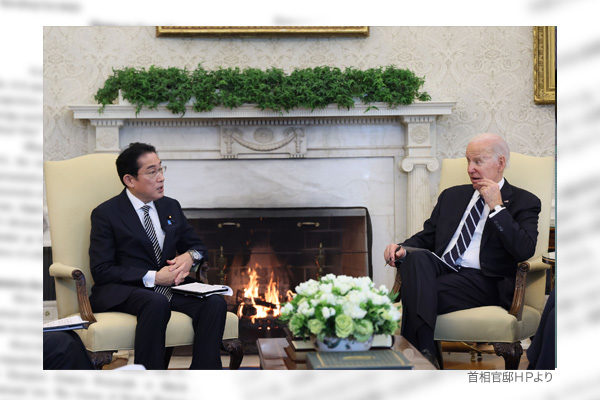At a Japan-U.S. summit on January 13, U.S. President Joe Biden highly appreciated Japan’s fundamental defense buildup including the acquisition of counterstrike capabilities. “We’re modernizing our military alliance, building on Japan’s historic increase in defense spending and new National Security Strategy,” Biden said at the outset of the summit. The “modernization” has become a keyword for the Japan-U.S. alliance, indicating that Japan’s role has been growing amid the transformation of the alliance.
From old modernization to new modernization
The use of the term “modernization” has changed over the past decade. In April 2013, a White House fact sheet on then U.S. President Barak Obama’s pivot or rebalancing toward the Asia-Pacific in April 2013 said the alliance would be “modernized.” Washington then encouraged Japan to play a more active role after the U.S.-centric defense arrangement during the Cold War. In this sense, the modernization may be taken as indicating the old modernization that referred to the transition from feudalistic social systems through the industrial revolution.
In Japan, the second Shinzo Abe administration was inaugurated in late 2012, with his Liberal Democratic Party taking back government from the then Democratic Party of Japan. The Abe administration enacted the peace and security legislation endorsing Japan’s limited exercise of collective self-defense rights in an effort to enhance the Japan-U.S. alliance. The same word of “modernization” was used for describing the enhancement, but it meant the new modernization that goes beyond the old modernization and promotes the transformation to address current challenges. A joint statement after a Japan-U.S. “2 plus 2” meeting comprising foreign and defense ministers from the two countries in January 2022 said the ministers “expressed their determination to constantly modernize the alliance and strengthen joint capabilities.”
A joint statement after a “2 plus 2” meeting on January 11 this year included a section on “modernizing the alliance,” calling for accelerating bilateral talks on “allied capability to deter and respond,” “space, cyber and information security” and “maintaining the technological edge.”
Particularly, the joint statement said the ministers “decided to deepen bilateral cooperation toward the effective employment of Japan’s counterstrike capabilities in close coordination with the United States.” This indicates that the two countries are growing conscious of actual warfare in preparation for a Taiwan contingency. They have broken away from an old arrangement where the Japanese Self-Defense Forces were designed to serve as the shield under their exclusively defensive posture, with U.S. forces playing as the spear to undertake attacks on other countries.
How to implement the strategy is a challenge
A senior Japanese government official said the “transformation” might be more appropriate than the “modernization” for describing the change in the Japan-U.S. alliance. The latest Japan-U.S. ”2 plus 2” and the subsequent bilateral summit demonstrated that Japan is now working actively to enhance the alliance after years of remaining passive.
As U.S. Defense Secretary Lloyd Austin pointed out, it will be important to “bring that strategy to life” or implement the strategy. Japan is required to maintain a strong determination to do it.
Takashi Arimoto is a Planning Committee member at the Japan Institute for National Fundamentals and publisher of Monthly Magazine SEIRON at the Sankei Shimbun newspaper.


